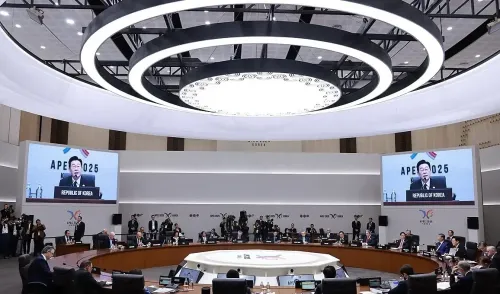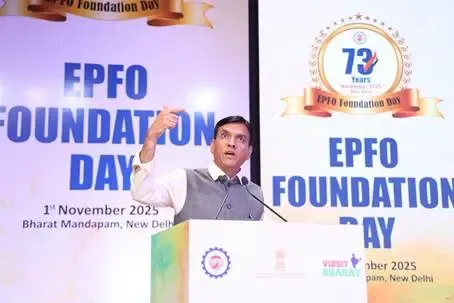Do Strong GST Collections Disprove Fears of Major Declines?

Synopsis
Key Takeaways
- GST collections increased by 4.6 percent in October.
- Total refunds for October reached Rs 26,934 crore, up 39.6 percent year-on-year.
- States are expected to remain net gainers post rationalisation.
- Historical adjustments suggest a rebound in revenue post rationalisation.
- Gross import revenue rose by 12.8 percent.
New Delhi, Nov 1 (NationPress) The robust growth in GST collections not only dispels the nearly irrational worries of significant declines but also counters the concerns voiced by states regarding a supposed downturn in GST revenue following rationalisation, as stated by SBI Research on Saturday.
Defying the rampant speculation about a drastic drop suggested by many economic analysts, Gross GST collections for October 25 (which refers to returns for September filed in October) rose by 4.6 percent to Rs 1.96 lakh crore.
While the overall domestic collection saw a 2 percent year-on-year increase, the Gross import revenue for October surged by 12.8 percent.
The E-way bill generated during September reached a record high of Rs 13.2 crore.
In a testament to improved business operations, total refunds for October amounted to Rs 26,934 crore, reflecting a remarkable 39.6 percent year-on-year growth.
“Assuming that states experience similar gains (and losses) post rationalisation as observed in October, we forecast GST revenue for FY26 where, on a basic level, most states appear to benefit positively throughout the fiscal year following rationalisation, indicating that states are likely to remain Net Gainers post GST rationalisation,” commented Dr. Soumya Kanti Ghosh, Group Chief Economic Advisor at State Bank of India.
Despite the Union's estimate of a potential revenue loss due to GST rate rationalisation being Rs 48,000 crore, several research institutions and their prominent figures had prematurely predicted revenue losses that could reach a staggering Rs 10 lakh crore.
“Historical data from previous GST rate adjustments, including those in July 2018 and October 2019, indicate that rationalisation doesn’t inherently diminish revenue collections. Instead, it suggests a temporary adjustment period followed by an uplift in revenue,” the report highlighted.









